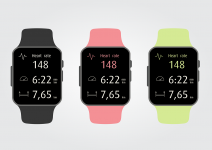Could Fitness Tracking Data be Used as Evidence in Criminal Cases?

Self-tracking fitness devices and apps are becoming increasingly popular.
But although they may seem like nothing more than a handy way to improve your personal health, it’s possible they could be used for a more sinister purpose in the not too distant future.
In a recent case in Canada, the information from a personal trainer’s “fit bit” was used as evidence to show the woman’s reduction in physical activity after injury for the purpose of supporting a personal injury lawsuit.
This information was voluntarily sent to be analysed by a third party so that the data could be verified and interpreted, much in the same way that DNA evidence is sent to laboratories to be tested.
Can information from tracking apps be used involuntarily?
With the widespread use of these types of apps, as well as social media pages, we can expect to see them being used more frequently in courts in the future.
In the above case, the information given was voluntary, it is certainly possible that people could be forced to provide the information from their personal apps via a subpoena.
This could mean that this type of evidence could potentially be used in a variety of civil as well as criminal cases, possibly to establish or disprove what a person may have been doing during a particular time-period.
For many people who use self-tracking apps, the idea of the data being used for anything other than personal reasons is not something they are likely to consider. Information about health, fitness and level of activity could be particularly attractive to health insurers and employers, as well as those disputing personal injury claims or workers’ compensation insurance matters.
Are self-tracking apps the new DNA?
There are a number of issues with the reliability of self-tracking apps and wearable tech.
These devices use basic gadgetry including accelerometers and altimeters to measure movement.
Once the movement has been tracked, certain algorithms are applied to it to make the data accessible to users.
Self-tracking apps often require a certain amount of self-reporting, which makes it highly possible that they can be used to create false data sets or that the information could at the very least be less than accurate.
It is also possible that devices and information could be reverse engineered and changed in the event of a person facing legal proceedings, which could make them much less credible than other sources of evidence.
The accuracy of DNA evidence and other well-established forms of evidence like fingerprints is often questioned.
There have been proven cases where DNA evidence has been misleading and even led to the wrong people being convicted.
It’s important that courts don’t take fitness tracking apps and devices as fact, and that judges and juries are educated on the possibilities for inaccuracies and potential misuse of these devices.
Self-tracking apps are perhaps most likely to be used as a way of giving context or a general overview to a situation, and not to answer factual questions in the same way that DNA evidence and fingerprints do.
But as self-tracking apps get more sophisticated, it becomes more likely that we will see them being used in court, especially in cases involving allegations of fraudulent health insurance or workers’ compensation claims.
Technology is being developed to measure a range of different physiological factors, including heart rate, breathing rate and levels of stress.
It’s possible that these factors could be extrapolated at a later date and used to determine not only a person’s physical location at the time a crime was committed, but also their potential state of mind and level of activity, which could give a clue as to what they were doing at the time.
The limitations
We are still a way away from fitness tracking data being used as valuable evidence in criminal courts, but chances are that at some point in the not too distant future this will become a reality.
As with other forms of data that is used as evidence, there are certain limitations with using tracking data, including the need to prove that the person whose data is being used was the person who was wearing the device at the time, and awareness of the potential ability to falsify information or report inaccurately.






